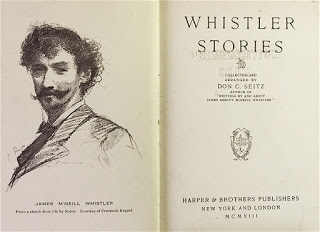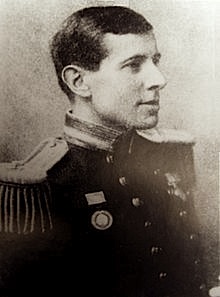Found – Whistler Stories (Harper, New York 1913) put together by Don C Seitz. Many of the stories associated with the artist James McNeill Whistler are ironic jokes about his incredible self regard (‘…responding to an admirer who stated that there were only two great painters – Velasquez and himself. “Why drag in Velasquez.”’) or withering put downs. This exchange with Oscar Wilde is a good example of the latter:
Wilde asked the artist’s opinion upon a poem which he had written, presenting a copy to be read. Whistler read it and was handing it back without comment.
“Well,” queried Wilde, “do you perceive any worth?”
“It’s worth its weight in gold,” replied Whistler.
The poem was written on the very thinnest tissue-paper,
weighing practically nothing. The coolness between the two men is said to have dated from that moment.
The next story is a rare one – someone turns the tables on the great artist:
Whistler had a French poodle of which he was extravagantly fond. This poodle was seized with an affection of the throat, and Whistler had the audacity to send for the great throat specialist, Mackenzie. Sir Morell, when he saw that he had been called to treat a dog, didn’t like it much, it was plain. But he said nothing. He prescribed, pocketed a big fee, and drove away. The next day he sent posthaste for Whistler. And Whistler, thinking he was summoned on some matter connected with his beloved dog, dropped his work and rushed like the wind to Mackenzie’s. On his arrival Sir Morell said, gravely: “How do you do, Mr. Whistler? I wanted to see you about having my front door painted.”
Lastly a tale that shows his self opinion was justified, although it took a few decades…
An American millionaire, to whom wealth had come rather quickly from Western mines, called at the Paris studio with the idea of capturing something for his gallery. He glanced casually at the paintings on the walls, and then queried:
“How much for the lot?”
“Four millions,” said Whistler.
“What?”
“My posthumous prices! Good morning!”



